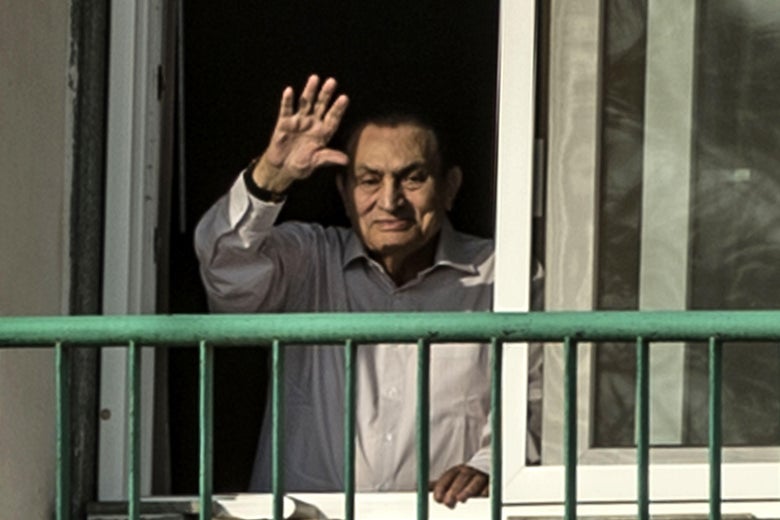
Egypt’s former president Hosni Mubarak waves to people from his room at the Maadi military hospital in Cairo on Oct. 6, 2016.
KHALED DESOUKI/Getty Images
Former Egyptian President Hosni Mubarak, who spent three decades in power before being deposed in 2011 during the Arab Spring, died Tuesday at the age of 91. Mubarak came to power in 1981 promising security for Egyptians grappling with the assassination of his predecessor Anwar Sadat. As leader, Mubarak cracked down on Islamists, arresting and imprisoning supporters of the movement that had launched a campaign of attacks on government officials and foreign tourists. The drive for security, however, veered into sustained autocratic rule, charting a legacy of violent political repression, widespread corruption, and poverty.
“Mubarak had once appeared invincible. He had survived multiple assassination attempts, held power longer than anyone since Muhammad Ali Pasha, the founder of the modern Egyptian state, suppressed a wave of terrorism by Islamic fundamentalists and appeared even to defy the gravity of age,” the New York Times notes. “But his edifice of power turned out to be fragile and dated, built on strong-arm rule, cronyism and an alliance with the West. It was ultimately brought down by the shock wave of popular unrest in the Arab world—calls for democracy, the rule of law and an end to corruption—that came to be called the Arab Spring.”
After 18 days of protests, Mubarak was forced to resign in Feb. 2011, arrested and put on trial. Mubarak was later imprisoned for state security forces killing of hundreds of Arab Spring protesters, as well as corruption charges.
from Slate Magazine https://ift.tt/381lYto
via IFTTT
沒有留言:
張貼留言